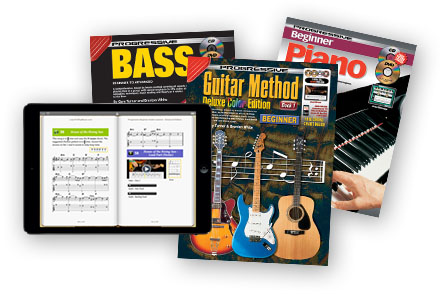<< First < Previous | Intro 1 2 3 4 5 | Next > Last >>
Back to Table of Contents
Notes and Rest Values
The longest note commonly used in music is the whole note, which lasts four beats. The table below shows how the whole note can be divided into shorter notes. Whole notes and half notes are not common in drum notation but are very common in music written for other instruments and are definitely worth learning to recognise and count.
Notes Used In Drum Beats
The note values most commonly used in drum notation are the quarter note, the eighth note and the sixteenth note. Most drum beats and patterns are made up of combinations of some or all of these note types.
The following example contains eight bars of music to be played on the snare drum. It uses only whole notes and whole rests. It is important to count out loud as you play and keep a steady tempo. Play the example with the right hand and then the left hand, then try alternating.
| 1 |
Video
| 2 |
This example makes use of the half note and the half rest. Once again, be sure to count out loud as you play and practice it with both the right and left hands.
| 2 |
Video
| 3 |
The following example uses quarter notes and quarter rests. There are several ways to play this example. First, alternate the hands RLRL and then reverse them (LRLR). Once you can do this strongly and evenly at a reasonable tempo, play the example with one hand at a time (RRRR etc and LLLL etc). This will help to prepare you for actual drum beats and fills.
| 3 |
Video
| 4 |
This example uses whole notes, half notes and quarter notes. Remember to keep an even tempo and count out loud as you play. Counting is very important for drummers, as the rest of the band will be relying on you to keep solid time even if they make mistakes! Counting out loud right from the beginning, along with the use of a metronome or drum machine is the best way to develop a good sense of time.
| 4 |
Video
Building a Drum Beat
Most drum beats require the use of three limbs and sometimes all four. When learning any new beat, it is a good idea to practice coordinating two limbs at a time before combining all the parts. In the following example, the bass drum is played with the right foot on every beat and the snare drum is played with the left hand.
| 5 |
Video
| 6 |
In this example, the right hand plays either the hi hat or ride cymbal (try one and then the other) on every beat and the bass drum is varied.
| 6 |
Video
| 7 |
Once again the right hand plays the cymbal, but this time it is played in conjunction with the snare drum.
| 7 |
Video
| 8 |
This example is a full drum beat based on quarter notes. The right hand plays quarter notes on every beat, the left hand plays on the 2nd and 4th beats and the right foot plays on the 1st and 3rd beats. The alternation between bass drum and snare drum is a common element of drumming in many styles of music. The use of the snare drum on beats 2 and 4 is called a backbeat.
Here are a couple of variations on this basic beat. In the following example, the bass drum is used on every beat.
| 8 |
Video
Here are a couple of variations on this basic beat. In the following example, the bass drum is used on every beat.
| 9 |
Video
| 10 |
The following example is a combination of the previous two beats. The bass drum is used on all four beats in the last bar. This helps build momentum for a return to the beginning.
| 10 |
Video
<< First < Previous | Intro 1 2 3 4 5 | Next > Last >>
Back to Table of Contents

















































